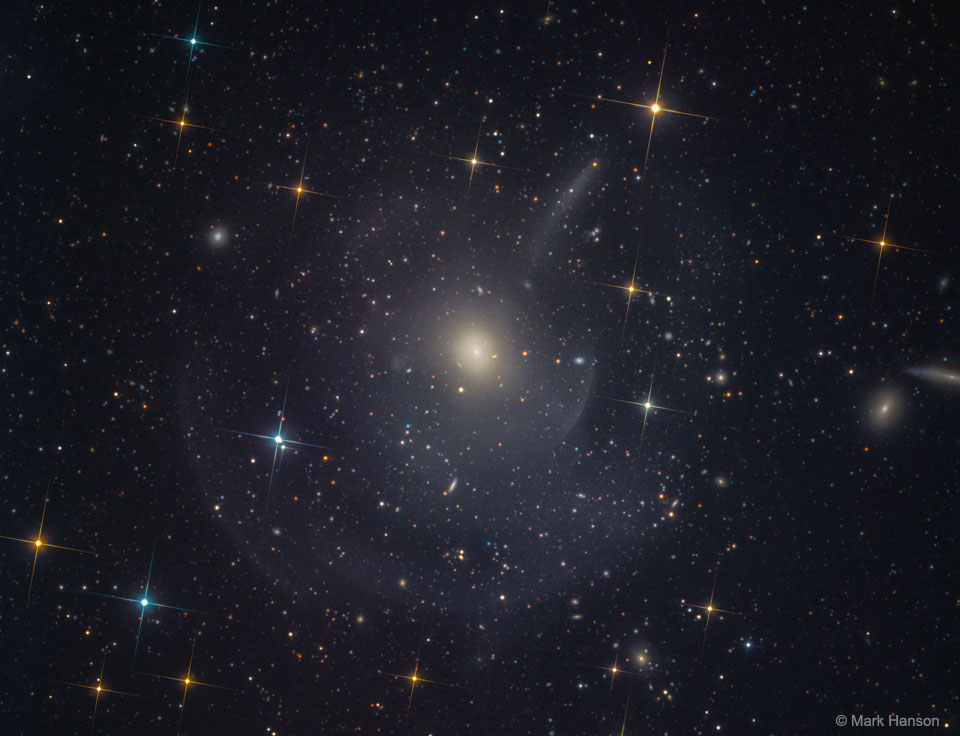more »
Can you see them? This famous
Messier object
M89, a seemingly simple
elliptical galaxy, is surrounded by faint shells and plumes. The cause of the shells is currently unknown, but possibly
tidal tails related to debris left over from absorbing numerous small galaxies in the past billion years. Alternatively the
shells may be like ripples in a pond, where a recent collision with another large galaxy created
density waves that ripple through this galactic giant. Regardless of the actual cause, the
featured image highlights the increasing consensus that at least some elliptical
galaxies have formed in the recent past, and that the outer halos of most
large galaxies are not really smooth but have
complexities induced by frequent interactions with -- and accretions of -- smaller nearby galaxies. The halo of our own
Milky Way Galaxy is one example of such
unexpected complexity.
M89 is a member of the nearby
Virgo cluster of
galaxies which lies about 50 million
light years distant.
Zazzle Space Gifts for young and old
